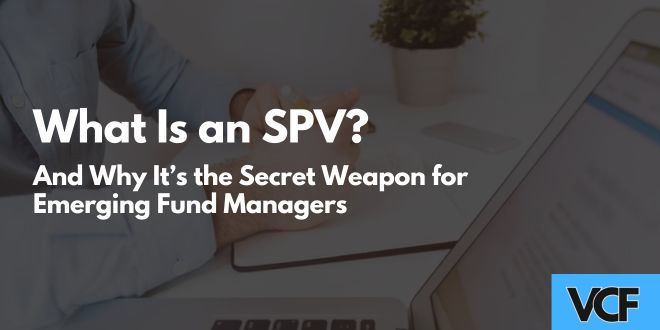You want to launch a fund, not collect billable hours. With patience, tight checklists, and a cool head, you can build a clean structure without hiring outside counsel. This guide is for first time managers who want trustworthy instructions and a few guardrails. We will cover the building blocks, key filings, and the habits that make investors nod. If you are exploring Venture Capital Funding, you will feel right at home. Grab a coffee and let’s get to it.
Start With the Blueprint
Most managers use a three entity stack that keeps duties tidy. The fund is a limited partnership that holds investor commitments and makes investments. The general partner is a small LLC that controls decisions and carries fiduciary duties. A separate management company hires staff, pays vendors, and collects management fees.
This design separates liability, keeps economics flexible, and makes tax reporting simpler. Put GP and management company ownership on paper early, including who receives carry, who votes on big changes, and who can sign documents.
Exemptions and Registrations
Private funds avoid becoming registered investment companies by relying on exemptions. The two common paths are 3(c)(1), which limits the number of beneficial owners, and 3(c)(7), which requires qualified purchasers but allows a bigger headcount. Pick one, then align every document, questionnaire, and investor conversation to that choice.
On the adviser side, determine whether you must register, or whether you can file as an exempt reporting adviser. File what is required in your home state or with the SEC, then calendar renewals.
If you operate across multiple states, track thresholds and notice rules in a one page matrix. Update it as assets change. Clarity beats panic, and panic loves a missing notice filing.
Marketing and Securities Rules
When you raise, you sell partnership interests under Regulation D. Choose Rule 506(b) if you will avoid general solicitation and limit who sees your materials. Choose Rule 506(c) if you will advertise, but be ready to verify accredited status with documentation.
In both cases, file Form D within fifteen days after the first sale, then handle Blue Sky notices. Date every deck, private placement memorandum, subscription agreement, and questionnaire. Keep an organized data room with a clean version history and a single source of truth.
The Core Agreements
Your limited partnership agreement is the engine room. State the investment period, fund term, commitment and call mechanics, investment limits, recycling rules, fee schedule, carry percentage, clawback, key person, removal, conflicts process, and indemnification.
Explain which expenses the fund pays and which belong to the manager. Add a valuation policy or incorporate a separate one by reference so investors know how you will mark private holdings and who approves changes.
The subscription agreement captures identity, accreditation, and tax forms. Align representations to your chosen exemption, and build a clear process for 506(c) verification if you go that route. A private placement memorandum is not always required, but it is smart. It gathers risks, conflicts, fees, strategy, and performance disclosures in one place, which is exactly what investors expect to download, read, and save.
Carried Interest and Waterfalls
Carry often sits at twenty percent, but the math matters more than the headline. Decide whether your waterfall is American, which pays deal by deal subject to clawback, or European, which waits until contributed capital and any preferred return are back. Set a reasonable preferred return and define the catch up step. Include simple numeric examples. That one page saves hours of calls and a lifetime of awkward distributions.
Taxes That Sneak Up on You
A limited partnership is usually tax transparent. The fund files a partnership return and distributes Schedule K 1s. Income, losses, and credits flow through to partners based on the agreement. Watch for UBTI and ECI issues that affect tax exempt and non U.S. investors. Consider blocker entities where appropriate, and coordinate with a fund tax accountant before admitting sensitive investors so you can offer a clean solution and avoid retrofits.
On the manager's side, carry typically lives in the GP or a special vehicle. If anyone receives profits interests, mind 83(b) elections and deadlines. Management fees flow to the management company, which pays staff and overhead.
Be cautious with fee waivers and similar tactics. They can work, but they invite scrutiny if sloppily implemented. Keep crisp books that separate fund and manager expenses, reconcile intercompany activity monthly, and label every wire. Your first audit will feel civil rather than chaotic.
Operations That Signal You Are Serious
Small teams can operate like pros with a few habits. Use a fund administrator for capital calls, statements, and the investor portal. Choose an auditor and decide whether the fund will be audited annually. Adopt a written valuation policy that explains methods, frequency, and sign off. Stand up a secure data room with version control and limited permissions so investors always see the latest documents and only the right people can download them.
Add banking resolutions, dual approval for wires, and call back procedures for any new instructions. Build a compliance calendar that lists dates for Form D, Blue Sky notices, adviser filings, and investor letters. Use templates for capital call and distribution notices so the format never drifts. Name files sensibly, guard signing authority, and document how you handle material nonpublic information. The unglamorous details create trust, and trust closes capital.
A Timeline You Can Follow
From idea to first close, think in three phases. Formation means entities, EINs, bank accounts, and drafting the LPA, subscription agreement, and PPM. Pre raise means selecting your exemption, assembling the data room, and collecting diligence materials. Fundraising means sending materials only to appropriate investors, tracking interest crisply, and keeping closing files ready for signatures.
At first close, admit investors who have cleared diligence, call a modest percentage of commitments, and file Form D and state notices. After first close, continue rolling admissions with clean closing mechanics. Maintain a checklist that tracks each investor’s status across KYC, AML checks, wires, tax forms, and countersigned documents. Mirroring that list with your administrator prevents confusion and uncomfortable chase emails.
Common Mistakes, Easily Avoided
Do not commingle personal and fund expenses. Do not skip Blue Sky notices. Do not let side letters undermine the LPA or conflict with each other. Do not draft a complex waterfall by email. Do not forget the key person clause or what happens if a partner departs. Do not promise co investment rights you cannot honor. Do not accept capital before your entities and accounts exist. Each mistake is far more expensive to fix than to prevent.
When to Call a Professional
DIY does not mean alone. Call a lawyer or tax adviser when you cross borders, when an investor requests unusual side letter terms, when an investor is an ERISA plan, or when you plan to advertise broadly. Ask for limited scope reviews, capped fees, and standard templates. Your goal is not to practice law, it is to build a fund that operates smoothly, treats investors fairly, and stands up to diligence from larger institutions.
Conclusion
You can structure a legitimate, investor ready fund without hiring a full service law firm, as long as you follow a proven playbook. Keep your entities simple, your exemptions consistent, your documents clear, your taxes planned, and your operations disciplined
When a situation turns complex, buy targeted help. That balance keeps costs lean, keeps you compliant, and lets you focus on what you actually came here to do, which is find great companies and make smart investments.








